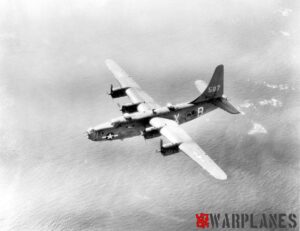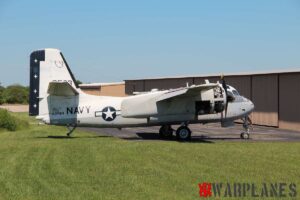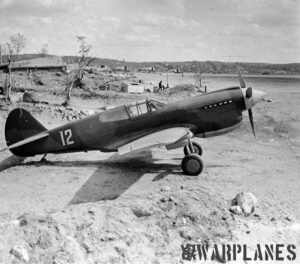British Strange Apparatus
Introduction:
As we have seen in yhe articles on Russian and French aviation designers sometimes created contraptions that were quite different from what we call a normal ‘aircraft’. However, also British aircraft designers sometimes had their own ideas of how an aircraft should look like. At least one of these designs -the Concorde- was the result of Anglo-French cooperation! Heavily subsidized by the governments of both countries they were definitely never profitable because only a small number was built and the tax payers of both countries had eventually to pay the bill (or check as they say in the U.S.). But………….the U.K. definitely produced more highly unconventional aircraft types! This photo report gives an overview of sometimes very unconventional aircraft. I hope you’ll enjoy the show!!
Photo 1
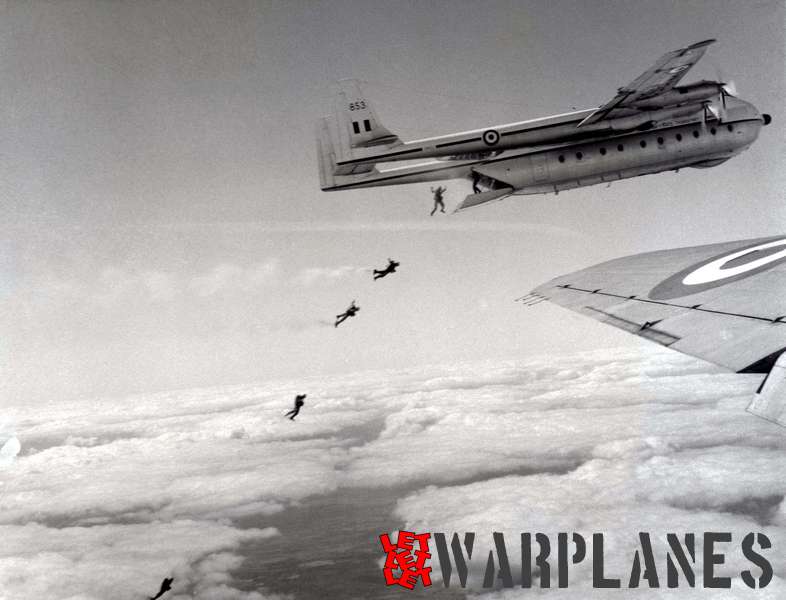
The Armstrong Whitworth AW.650 Argosy was a post war freighter fitted with four Rolls Royce Dart turboprop engines. With its twin boom lay-out it was a very remarkable sight in the European skies although some of the civil variants (known as AW.660) were used world-wide. The military version was used by the R.A.F. from the early sixties until it was replaced by the Lockheed Hercules. The military Argosy had capacity for 65 soldiers plus their equipment or 54 paratroopers. In total 74 were built.
Photo 2
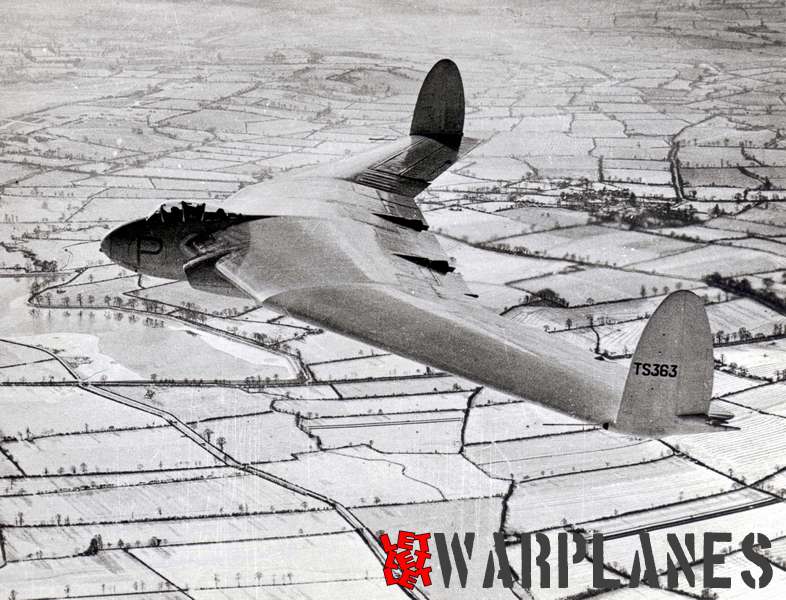
The Armstrong Whitworth AW.52 was a flying wing research plane that flew for the first time on 13 November 1947. Its flying characteristics were tested earlier on a half-scale wooden glider model; the AW.52G. Two models were built carrying R.A.F. serials TS363 and TS368. TS363 was powered by two Rolls Royce Nene turbojets; TS364 by two Rolls Royce Derwents. Although flying with the AW.52 provided valuable research data the project was not regarded as a great success. TS363 crashed on 30 May 1949 when test pilot Jock Lancaster lost control and the aircraft appeared to break up in the air. He escaped by using his Martin-Baker ejection seat and in fact he was the first British pilot successfully baling out with this device.
Photo 3
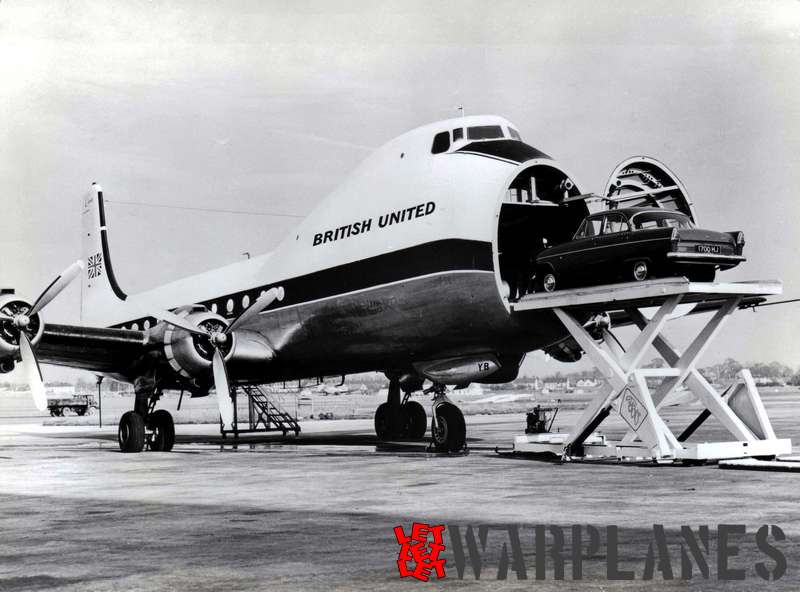
It is very difficult to imagine, but this aircraft with its tadpole-shaped front fuselage is in fact a converted Douglas DC-4. The British company Aviation Traders constructed in total 21 of these strangely shaped transport planes under their type designation ATL.98. The first one was built in 1959 as a car ferry on the British Channel routes to replace the earlier Bristol Freighter. Aviation Traders built in total 21 of these conversions. Initially they were used as car ferry between Rotterdam airport and Southend. Later they were also used between Antwerp airport and Southend. They were used on these routes for some years. Later they were sold to various operators in various parts of the world. The photo clearly shows how a car is loaded through the front door using a hydraulically powered lifting platform.
Photo 4
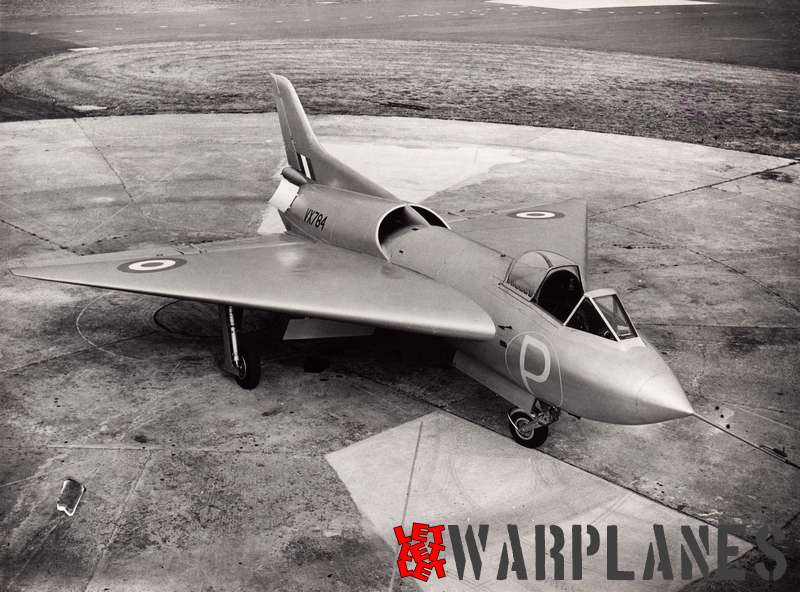
To gain in-flight experience for the future delta shaped Vulcan bomber, Avro developed and built in total five 1/3 scale ‘mini-Vulcans’. They were known as the Avro Model 707 and the first one flew on 4 September 1949. The first two were fitted with a dorsal air intake for the Rolls Royce Derwent jet engine, but the other three models had wing intakes, just like the Vulcan. One of these five, the 707C was built as a two-seater. Apart from test flying for the Vulcan, they were later also used as general test aircraft. VX784 as shown here was the first 707. It crashed three weeks after its first flight. The four remaining 707’s still exist in various aviation museums.
Photo 5

The Fairey Delta FD.2 was an experimental jet plane from the fifties that even set a world speed record. Two were built and one even got a ‘second life’ in much modified form as the British Aircraft Corporation 221. It was used in the sixties to flight-test the later Concorde wing. The B.A.C. 222 is here shown still in bare metal colors after its roll-out.
Photo 6
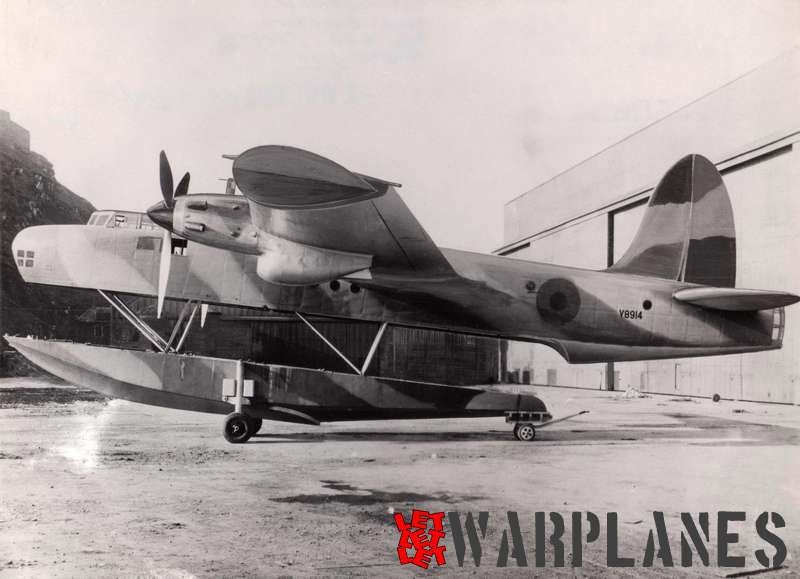
The Blackburn B.20 flying boat no. V8914 had as novel feature a retractable fuselage pontoon. This way good control during start and landing and adequate clearance between propellers and the water surface was obtained. When retracted during flight it gave much better aerodynamic streamlining. As such it was quite unique combination! The B.20 was intended as a medium-range ocean patrol flying boat making its first flight early in 1940. Although it was fitted with two quite troublesome Rolls Royce Vulture engines of 1750 hp each initial flying tests progressed quite well. Unfortunately the single prototype built was lost during a test flight and the further development was terminated.
Photo 7
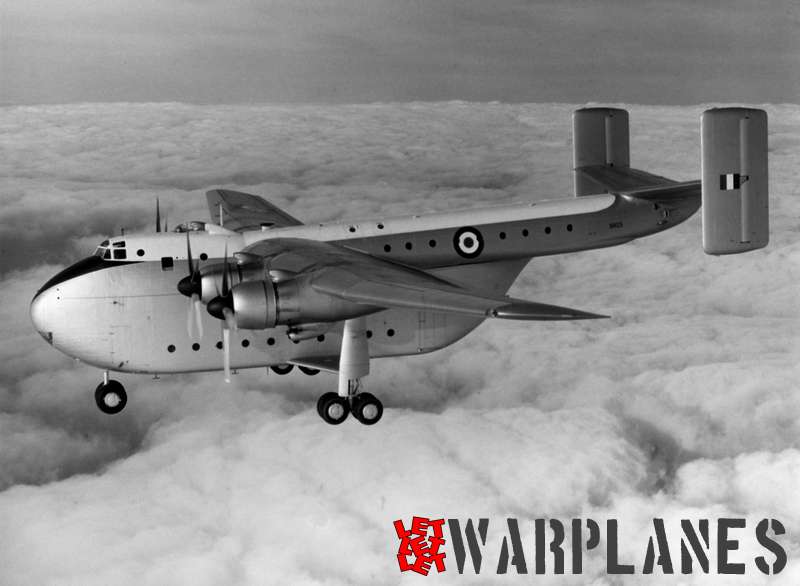
The Blackburn B.101 Beverly transport plane appeared a few years after the end of the war as a heavy military transporter with the possibility to drop paratroopers. Originally it was a project from General Aircraft. but Blackburn continued with this project when General Aircraft emerged into Blackburn. It made its first flight in 1950 and the R.A.F. ordered it two years later as its standard transport plane. Externally it was a very robust looking plane with a fixed undercarriage; apparently it was built more for capacity than for speed. However, fitted with four powerful Bristol Centaurus sleeve-valve radial engines of 2850 hp each it could cruise at a very credible 275 km/h. It could take off and land in respectively 410 and 300 m and could carry up to 80 soldiers or 70 paratroopers. It entered service at various R.A.F. transport squadrons in 1956 and was used until 1967 when it was replaced by the Armstrong Whitworth Argosy. In total 49 were built and the R.A.F. was its only user. XH123 as shown on the photo was one of the C.1 models, which was in fact the only model built!.
Photo 8
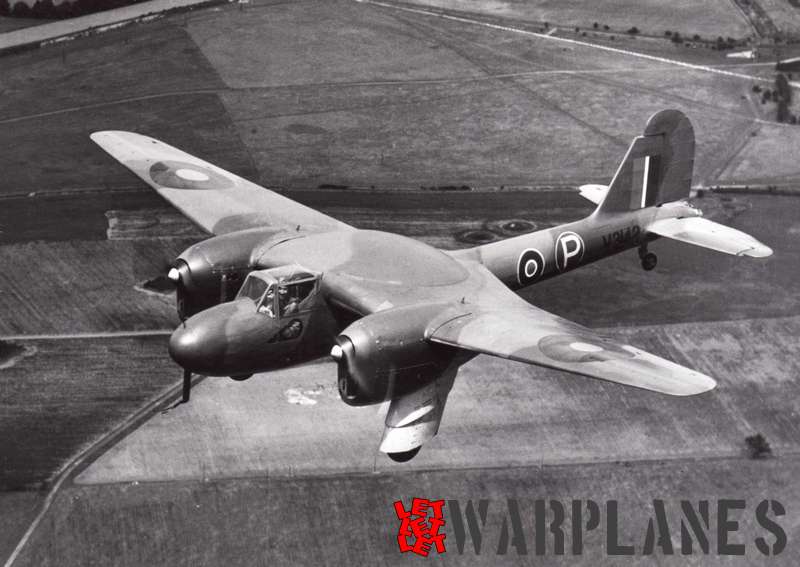
Boulton Paul developed in the years before the war their Defiant turret fighter. It went into service at the R.A.F. and played at least some role during the Second World War. Westland designed after the Defiant an even more ambitious type; a twin-engine long-range turret fighter. This was based on Spec. F.11/37. The Westland design P.92 was to be fitted with two Rolls Royce Vulture engines of 1750 hp each and a flat dorsal turret above the wing centre section with four 20 mm Hispano Suiza cannons. Westland decided to try first a manned half-scale model fitted with two 130 hp De Havilland Gipsy Major II engines and a fixed undercarriage with spatted mainwheels. It was built by Heston Aircraft Company and designated by Westland as P.92/2. It flew for the first time in the spring of 1941 carrying the R.A.F. serial V3142. However, the project was cancelled and only the scale model was built.
Photo 9
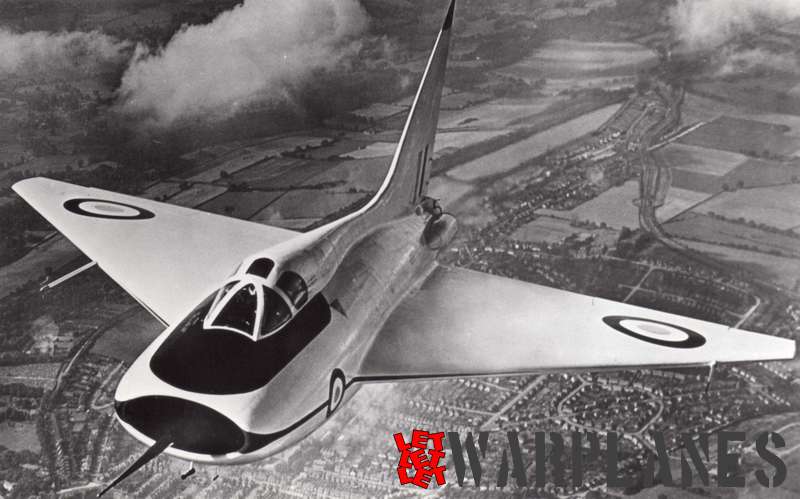
Another strange looking Boulton Paul design was the post-war P.111 delta jet research plane. Powered by a Rolls Royce Nene turbojet the P.111 made its first flight in October 1950. It was followed by a second ‘sistership’ that differed in detail in having a high tail with type designation P.120. The P.120 crashed shortly after its first flight in August 1952, but the P.111 still exists today after being used for several years as an instructional airframe at Cranfield..
Photo 10
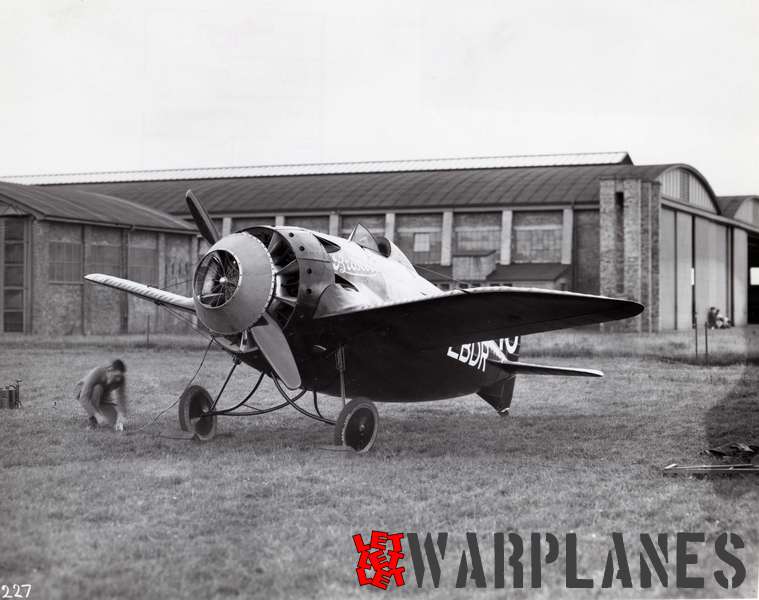
The French Coupe Deutsch de la Meurthe was in the twenties a very prestigious aerial derby. Bristol wanted to build not only a winner, but also a racing plane that could beat the existing British speed record of over 196 mph (315 km/h) established in December 1921 by the Gloster Mars. As Type 72 and simply known as the ‘Racer’ Bristol built a racing plane with a thick barrel-shaped fuselage, short stubby wings, a hand-operated retractable undercarriage and a 500 hp Bristol Jupiter radial engine. The Racer made its first short flight in July 1922, but it was found to be dangerous to fly. Also after some modifications it still had marginal flying properties and the plan to enter it in the race for 1922 was soon abandoned. The Bristol Type 72 carried the civil registration G-EBDR
Photo 11
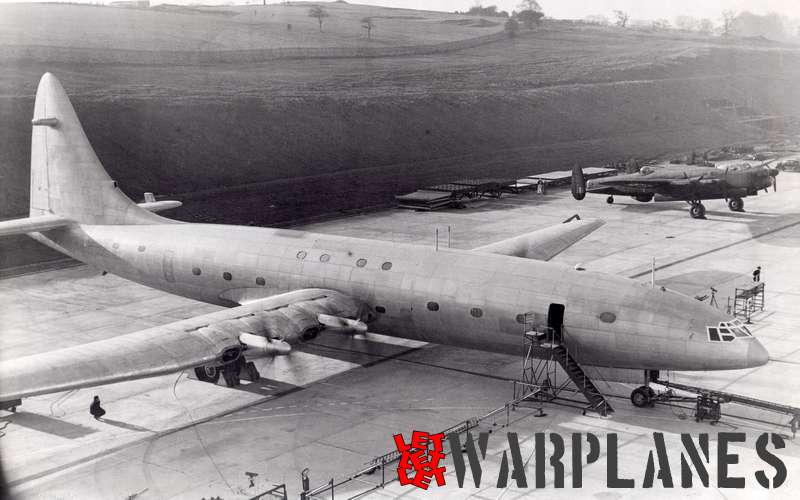
The Bristol Type 167 Brabazon project started in the early war years with as plan to have a large capacity commercial airliner once the hostilities were ended. Final work on a Mk. I prototype was started after the war with the prototype ready for its first flight in 1949.
It was fitted with eight Bristol Centaurus engines of 2500 hp each; four in each wing driving in pairs two contra-rotating propellers. It was soon evident that the 100 passengers capacity airliner was underpowered and definitely could not meet its specified performances. A second machine, the Brabazon Mk.II, was planned with four Rolls Royce Tyne turboprops of 7000 shaft hp each but it was only half completed when the whole project was terminated. The Brabazon Mk.1, carrying the registration G-AGPW, was finally broken up in 1953. So ended the story of a might-have-been UK ‘Jumbo of its time’! The photo shows clearly its size when compared with the Lancaster bomber!
Photo 12
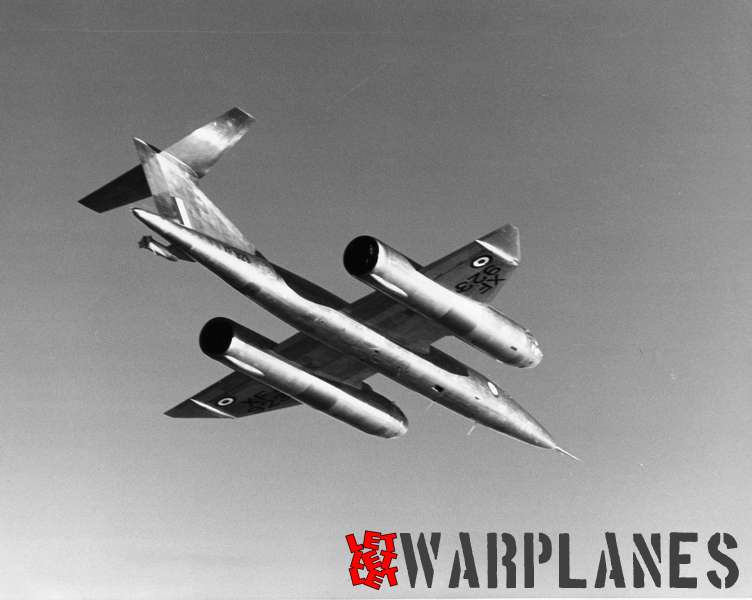
The T.188 was a Bristol design from the fifties for a manned research vehicle for flight investigation at high Mach numbers. Powered by two De Havilland Gyron Junior engines of 6350 kg thrust each and mostly built of stainless steel, it was hoped to reach a speed of more than Mach 2. Originally five were ordered but eventually only two were built and flown carrying the R.A.F. serials XF923 and XF926. A third airframe was used for structural tests.
XF923 made its first flight in April 1961. XF926 followed in April 1963. Flight performances were in general disappointing and the flight duration of some 20 minutes of supersonic flight was too short to do practical measurements. Highest speed obtained with the second machine was around Mach 1.88 but this speed could be maintained for a few minutes only. Both T.188’s were grounded in 1964. XF926 is on display in the Cosford Aerospace Museum; the other T.188 was scrapped. The photo shows the first T.188 fitted with a small pod on its rear fuselage with a brake parachute.
Photo 13
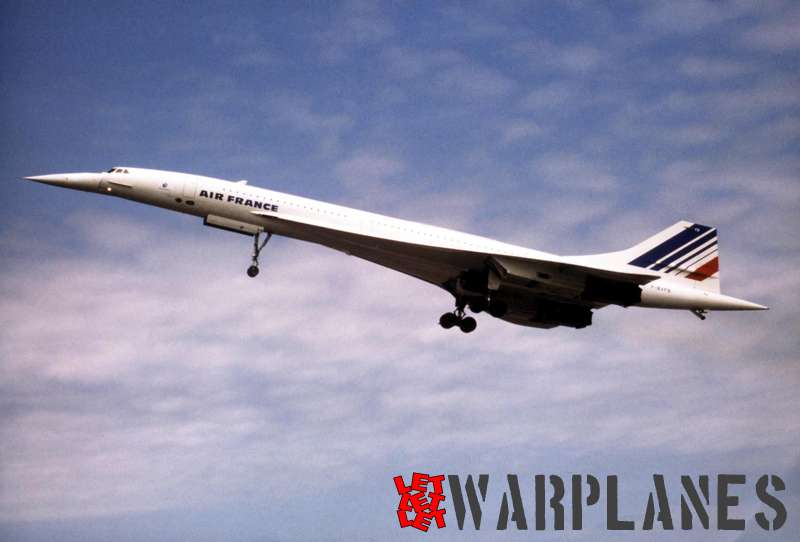
The story of the Anglo-French B.Ae/Aerospatiale Concorde may be regarded as well known. Technically it was a great achievement but in spite it flew for many years on regular air routes only twenty were built and after the crash of one Concorde near Le Bourget in July 2000 flying came to a final end in 2003. Visits to Schiphol airport were very rare since it was not lying on the normal flying routes, but it was shown here a few times for promotional activities. We see here Air France Concorde F-BVFB taking off from Schiphol airport’s ‘Zwanenburg’ runway on 25 May 1986.
Photo 14
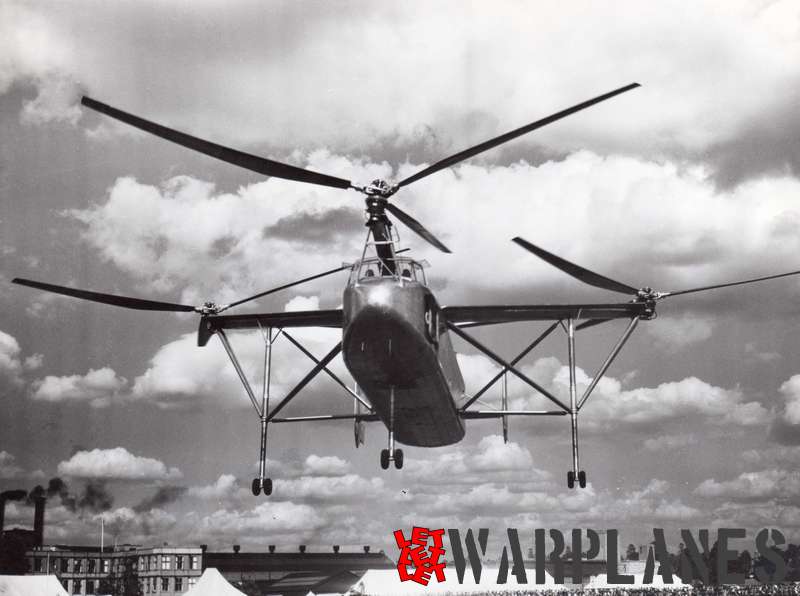
Cierva is most widely known for its pioneer work with autogiro’s in the years before the war. Even during the war some were used for radar calibration testing. After the war Cierva also tried to settle itself on the very lucrative helicopter market, but without much success. The photo shows the Cierva W.11 Air-Horse with a feature quite unique for a helicopter: three rotors! As power plant a 1620 hp Rolls Royce Merlin engine was used. Two were built carrying military markings and the R.A.F. registration numbers VZ724 and WA555. The Air-Horse had a capacity of up to 17 passengers and was at that time the largest helicopter. First flight was made in December 1948. Later they flew with the civil registrations G-ALCV and G-ALCW. Unfortunately G-ALCV crashed on 13 June 1950 because of in-flight rotor blade failure and the crew of three was tragically killed. The loss of the first machine and the death of the three people, including two of the most experienced British helicopter pilots marked the end of this project. The second W.11 G-ALCW was scrapped about one year later.
Photo 15
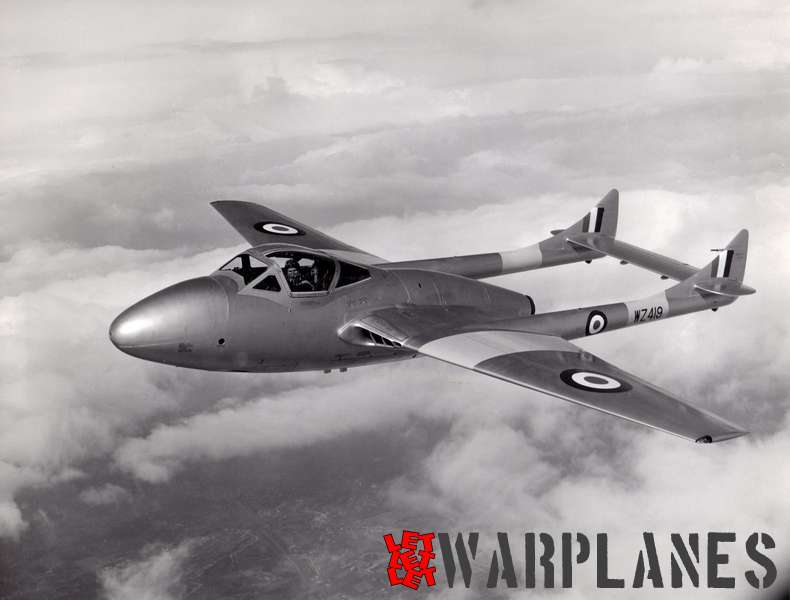
De Havilland designed and built during the war years the revolutionary DH.100 Vampire twin boom jet fighter. After the Gloster Meteor it was the second jet fighter going into R.A F. service although it came too late to participate in the war. It was later also adapted as a jet trainer with the seats arranged side by side.
WZ419 on this De Havilland publicity photo clearly shows the double seat cockpit..
Photo 16
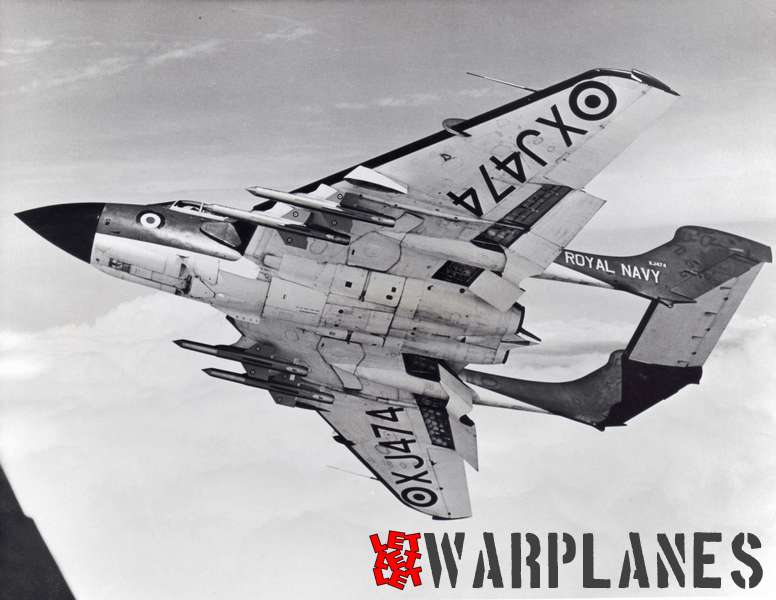
A further development of the early Vampire fighter was the De Havilland DH.110 Sea-Vixen. Powered by two Rolls-Royce Avons it was capable to exceed the speed of sound in a shallow dive. The Sea-Vixen made its first flight in 1951 and became later operational at the Fleet Air Arm as an all-weather fighter. The Sea-Vixen carried a pilot and a navigator/radar operator. In total 148 were built. As we can see on the picture it was armed with four Firestreak air-to-air missiles. However, during operational use it could also carry underwing bombs.
Photo 17
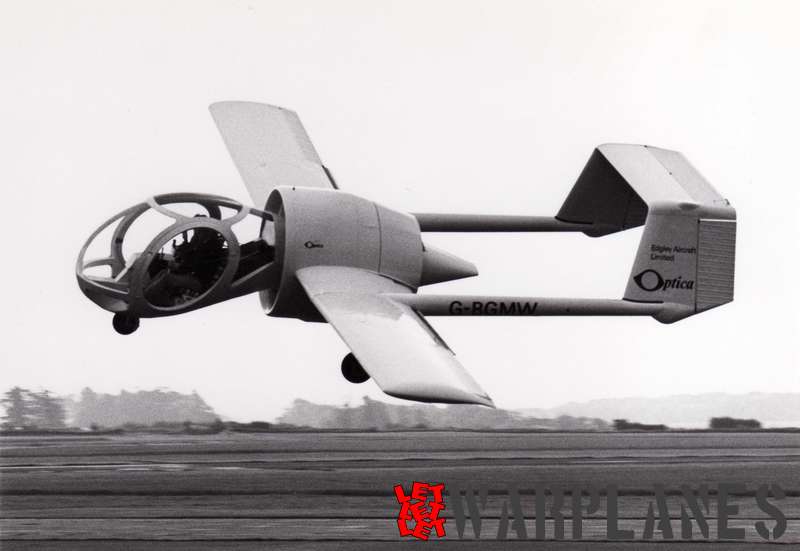
Another twin boom British aircraft was the Edgley Optica. It had an enshrouded pusher propeller and could fly at a speed of just above 100 km/h. In fact it could do everything a helicopter could except hovering and taking off and land vertically. However, it could be operated at a much lower cost and was intended for surveillance and (police) patrol work. In spite of looking to have a very bright future, it was not a big success and in total only 20 were manufactured before the company producing it went bankrupt in 1990.
Photo 18
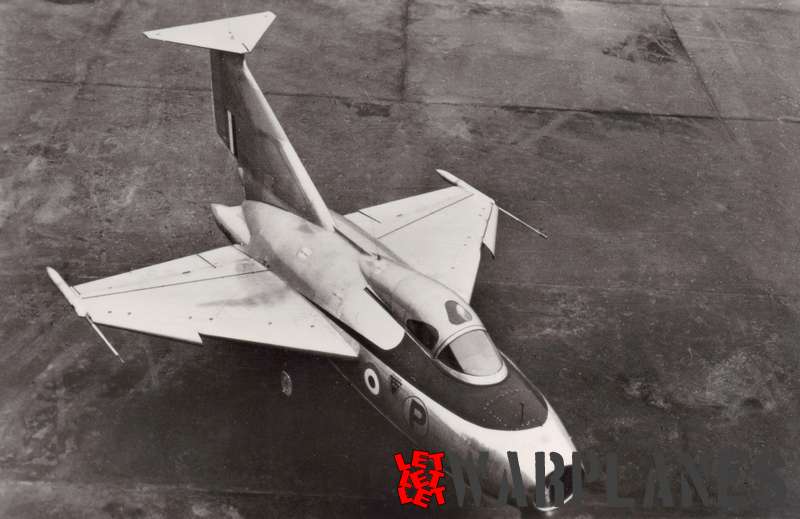
The Fairey FD.1 was a small delta-wing research plane powered by a Rolls Royce Derwent jet engine. Originally it was planned to take off vertically, but this was later given up. In spite of this it flew during its initial flight test phase still with the provisions for control of the jet efflux during vertical flight. Only one was built, carrying the R.A.F. registration VX350. It made its first flight on 12 March 1951. It was found to be difficult to fly and after it was damaged during a landing it was not repaired again. It spent its last days at the Shoeburness shooting range as target for gunners.
Photo 19
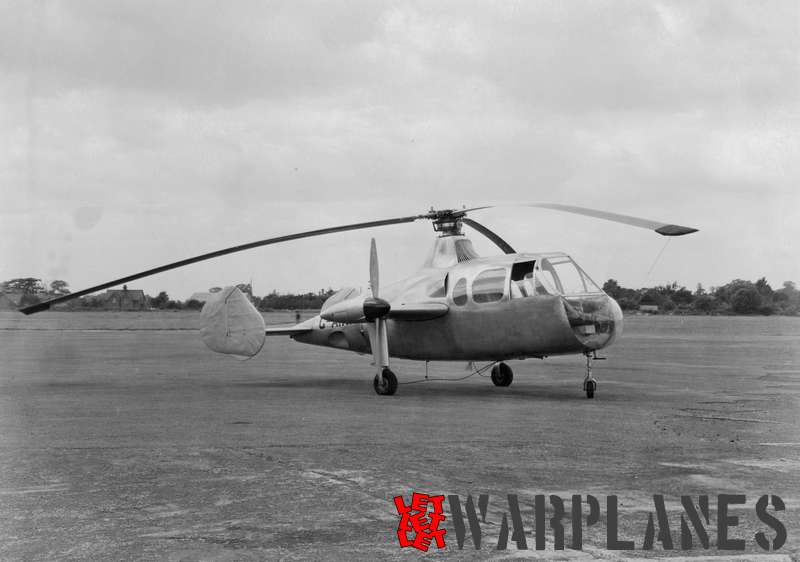
Another remarkable Fairey product was the Gyrodyne compound helicopter. It was a research helicopter that was later used to investigate jet tip drive for a much larger Fairey project: the Rotodyne. The rotor was only used at start and landing; for forward flight it was set in autorotation and power for forward flight was further provided by two side mounted propellers. Fitted with jet tip drive as also used later on the Rotodyne it became known as the Jet-Gyrodyne. Two were built and one crashed already before being converted into the jet-Gyrodyne configuration. The Gyrodyne made its first flight on 7 December 1947 with the civil registration G-AIKF. This official Fairey photo showing G-AIKF was released on 19 July 1948 and at that time still stamped as ‘Secret and Confidential’
Photo 20
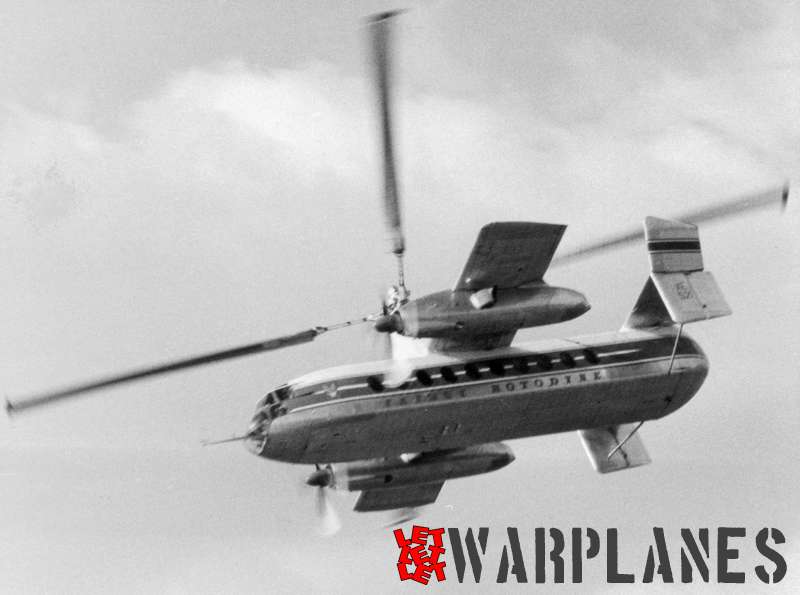
Already shortly mentioned at the description of the previous photo, the Rotodyne was Fairey’s attempt to produce a large capacity ‘convertiplane’ for up to 70 passengers that combined the characteristics of the helicopter and the conventional aeroplane. The design itself was very sound and attracted not only much interest but also potential customers. The prototype made its first flight on 6 November 1957. The final production version fitted with more powerful turboprop engines was scheduled to make ferry flights from London Central to Amsterdam Central Station flying over the sparsely populated River Thames area in the UK and over the North-Sea canal running from the Dutch coast to Amsterdam. Behind the Central Station at Amsterdam it would land and take off from a specially designed floating platform. Operator would be B.E.A. who had already placed an order for six. Unfortunately the most important military order for the R.A.F. was cancelled for budgetary reasons and by that time Fairey was taken over by Westland. Here they were apparently less enthusiastic on this project and the contract with B.E.A. was cancelled. We can only say Westland missed a fair chance to make the Rotodyne a success! The photo shows the Rotodyne prototype carrying military markings and the registration XE521. It is a private action shot most likely taken at the Farnborough airshow showing the Rotodyne during a low level run.
Photo 21
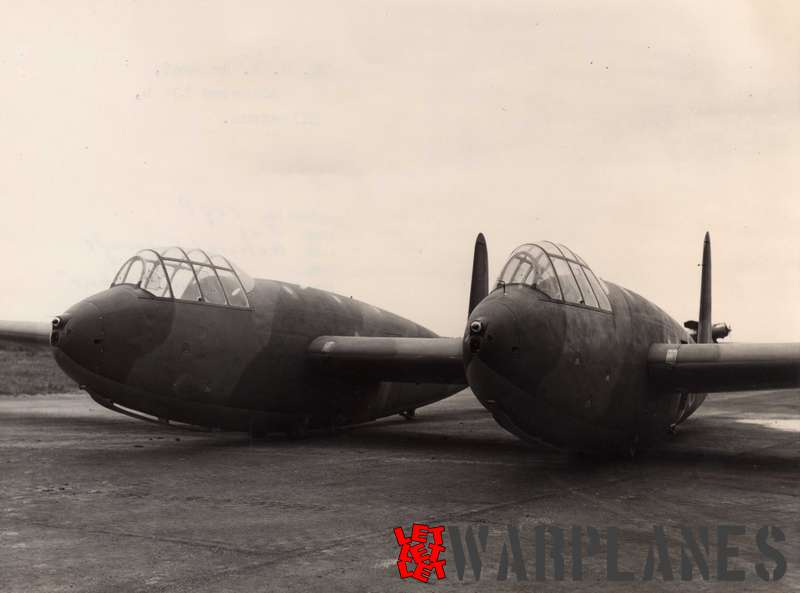
The General Aircraft GAL.48 Hotspur was a military glider built in the war years for military assault actions. Unfortunately it was a little bit on the small side and in practice it was only used to train future glider pilots for much bigger military gliders like the Aispeed Horsa. Apparently someone had a very bright idea for doubling the capacity: join two fuselages with a central wing and tail section! The result was the GAL.48B Twin-Hotspur. In August 1942 the sole prototype (MP486) underwent testing, towed behind an Armstrong Whitworth Whitley bomber. The project was abandoned before production could begin, primarily because the glider’s flight characteristics were criticised by the pilots flying it.
Photo 22
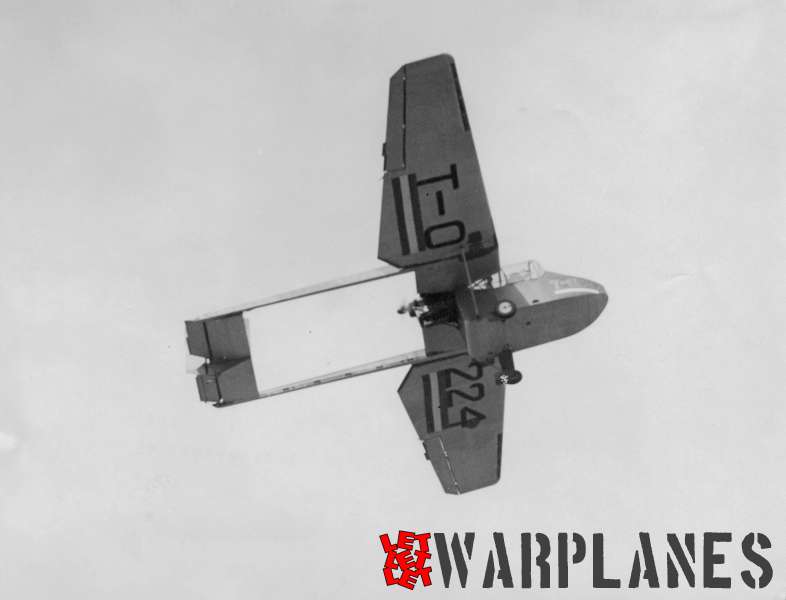
The General Aircraft GAL.47 was a 1940’s single-engine twin-boom aircraft, built by General Aircraft Limited at London Air Park, Hanworth.
It was a private-venture design for a small air observation post (AOP). The GAL.47 had a twin-boom configuration with a pusher propeller. One example was built in 1940 at London Air Park, Hanworth carrying the Class-B registration T-0224. It was destroyed on 2 April 1942.
Photo 23
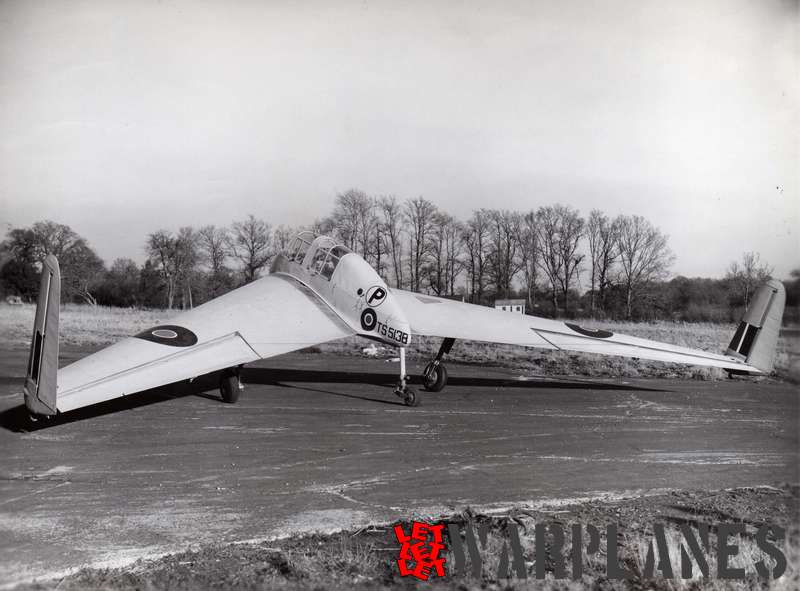
Directly after the war General Aircraft started the construction of three flying wing gliders. They were intended to generate in-flight data of this configuration for later flying wing projects. General Aircraft built three as GAL.56’s. A fourth flying wing without any vertical tail received as type designation GAL.61. TS513B as pictured here was the third and last GAL.56. Unfortunately General Aviation chief test pilot Robert Kronfeld crashed when he failed to recover the first GAL.56 from a pilot-induced stall. Although his on-board flight observer managed to escape by parachute, Kronfeld was killed upon impact. Kronfeld was an Austrian of origin and before the war well known as a glider pilot with various records on his name.
Photo 24
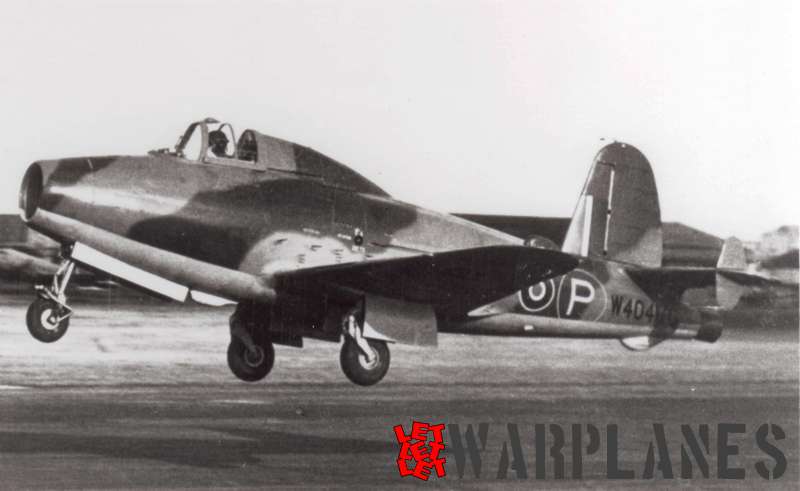
Although now regarded as ‘conventional’ , the Gloster E.28/39 was by the time it was flown far from conventional. It was in fact the first British aircraft fitted with a turbojet; invented, designed, built and tested by aviation pioneer Sir Frank Whittle. On 15 May 1941 Gloster’s Chief Test Pilot, Flt. Lt. Gerry Sayer wrote history by flying the aircraft under jet power for the first time. The flight lasted 17 minutes and was a complete success. Unfortunately Sayer was killed in October 1942 while flying the new Hawker Typhoon. Two prototypes of the E.28/29 were built. The second was destroyed in a crash but the first one can still be seen in the Science Museum at London.
Photo 25
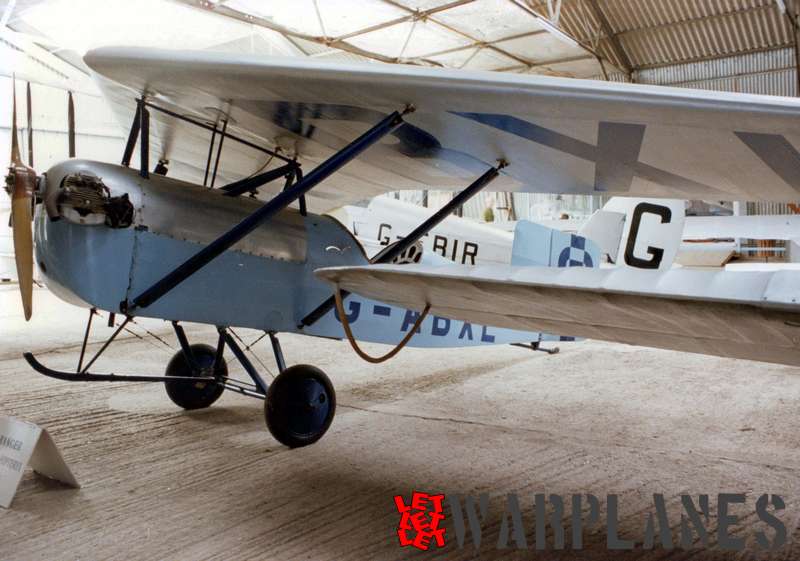
The Archaeopterix, named after a pre-historical bird, was a semi tailless light aircraft built in 1930 and based on the earlier tailless aircraft from mr. Dunne. It was designed and built by the brothers R.F.T. and R.T.J. Granger. Although it flew quite well only one was built, carrying the civil registration G-ABXL. It was later donated to the Shuttleworth Collection at Old Warden aerodrome where it was restored into an airworthy condition again. It flew again in 1973 after more than 35 years in storage. The colour picture shows the plane as photographed in June 1978.
Photo 26
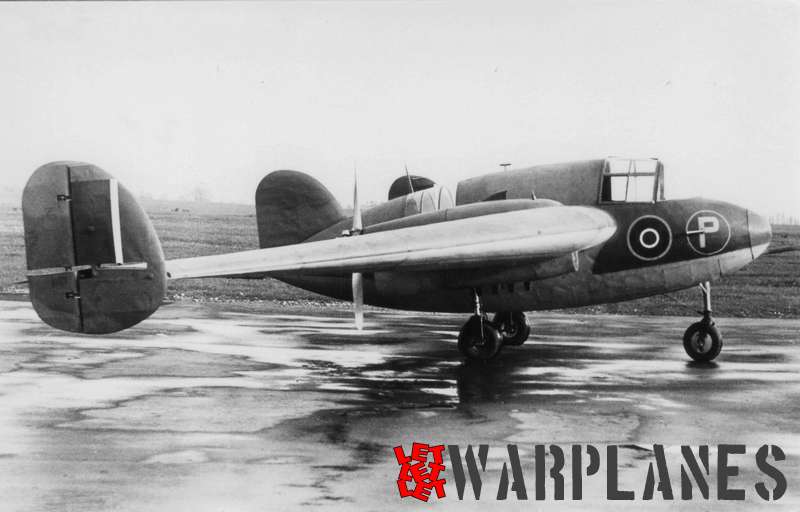
The Handley Page HP.75 Manx was a tailless wartime research plane fitted with two pusher propellers driven by De Havilland Gipsy Major engines of 140 hp each. It was a design from dr. Gustav Lachmann (a German aeronautical scientist who joined Handley Page in 1929). Construction was subcontracted to Dart Aircraft based at Dunstable. It was delivered in 1939 but needed substantial redesigning before first taxi trials could be started in early 1940. Also here structural shortcomings were found that delayed final flying and it was not until June 1943 that the first flight could be made. Also here things did not progress very well and when the test program was terminated in April 1946 it had only accumulated 17 flying hours over some 30 starts. The Manx was scrapped in 1952. The single one built flew in a military color scheme with R.A.F. markings but without a R.A.F serial. Instead the Class-B registration H-0222 was used. Concluding we may say the Manx was not a great success!
Photo 27
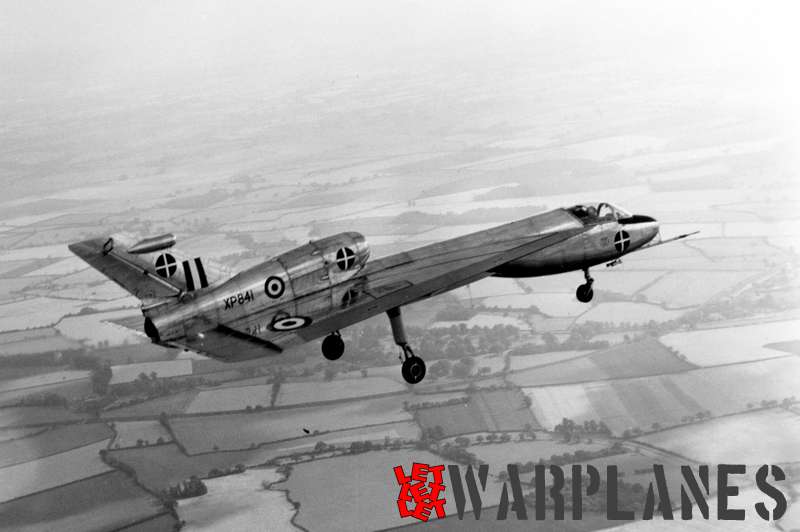
The Handley Page HP.115 was a small research jet plane fitted with a very slender delta wing. It was intended to accumulate in-flight data at the low-speed end for the supersonic Concorde airliner. Powered by a small Bristol Siddeley Viper turbojet giving 862 kg thrust it made its first flight on 17 August 1961 carrying the military registration XP841 with test pilot J.M. Henderson at the controls. It spent most of its flying time at the Royal Aircraft Establishment Bedford. The HP.115 flew very well and could be safely flown at speeds as low as 111 km/h. It had a quite lengthy flying career that continued until 1974. The HP.115 can be seen at the Fleet Air Arm Museum at Yeovilton alongside the BAC 221 and a Concorde prototype.
Photo 28
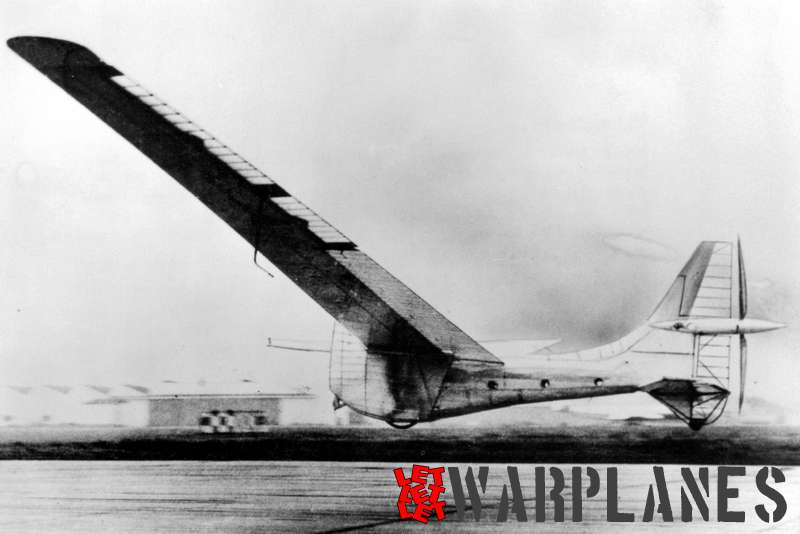
In the early sixties, there was a competition organised by the Royal Aeronautical Society with a prize for the first man-powered aircraft to fly one mile at least 10 feet off the ground for the whole flight. The Hatfield Man Powered Aircraft Club was formed of employees of de Havilland Aircraft Company and had access to company support. They constructed a man-powered aircraft with a span of 25.6 m and a weight of 64.8 kg called the ‘Puffin’. Powered by a propeller driven by bike-type pedals the Hatfield Puffin made its first flight on 16 November 1961 with John Wimpenny acting not only as a pilot but also as power source! Eventually its best distance was 908 metres. At the end of this flight Wimpenny landed in a state of physical exhaustion. His record stood for 10 years!
Photo 29
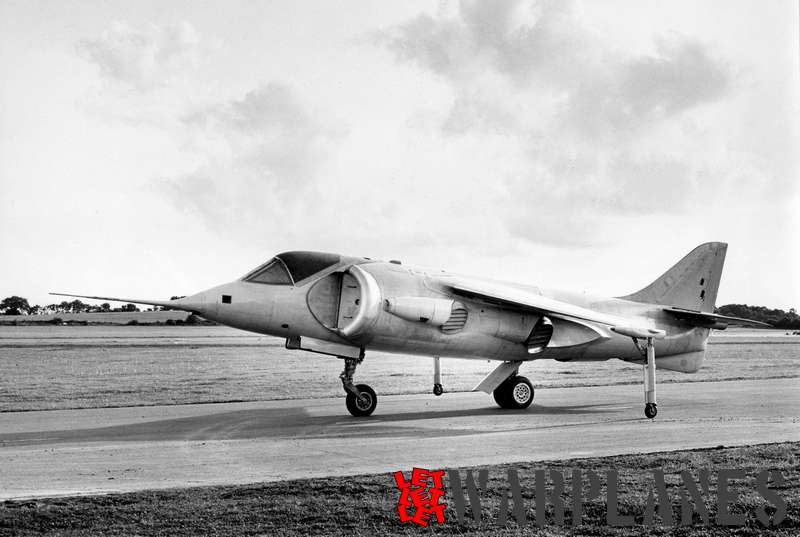
VTOL capabilities for a fighter always was an unfilled dream until Bristol Siddeley developed in the late fifties a reliable jet engine using vectored thrust. This had as big advantage over vertical mounted engines that they were no longer ‘dead weight’ after take off. It was called the Pegasus and offered a trust of 6804 kg, Based on the Pegasus, Hawker Siddeley designed and built an experimental research vehicle known as the P.1127 Kestrel with as main goal that it could be quickly developed into an operational VTOL jet fighter. The first prototype P.1127 with serial XP831 was delivered in July 1960 for static engine testing, and in October the Pegasus flight engine was made available. The first tethered flight took place at Dunsfold Aerodrome on 21 October 1960 and free flight hover was achieved on 19 November of that year, after which the first publicity photos were released. The picture shown is one of these, showing the P.1127 still without any markings. Later more Kestrel prototypes were built and tested with the well-known Harrier as final result. The Harrier was delivered to both R.A.F. and F.A.A. (as Sea Harrier) and that was not the end. It was exported to several counties and McDonnell Douglas manufactured an improved version as the AV-8 for the U.S. Marine Corps.
Photo 30
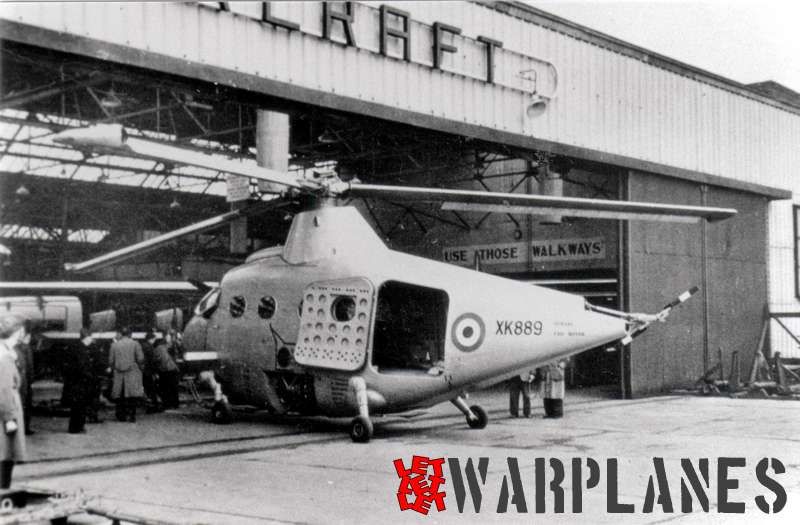
The Hunting Percival P.74 military transport helicopter for up to 8 soldiers was initiated in 1951 and was ready for flying by 1956. Powered by two Napier Orynx turboshaft engines of 754 shaft hp each generating gas for the tip-driven rotors with a laminar profile it looked very convincing, but during tests it simply refused to leave the ground! Plans to fit the P.74 with more powerful engines never materialized and the single P.74 helicopter built, carrying the RAF registration XK889, was soon scrapped.
Photo 31
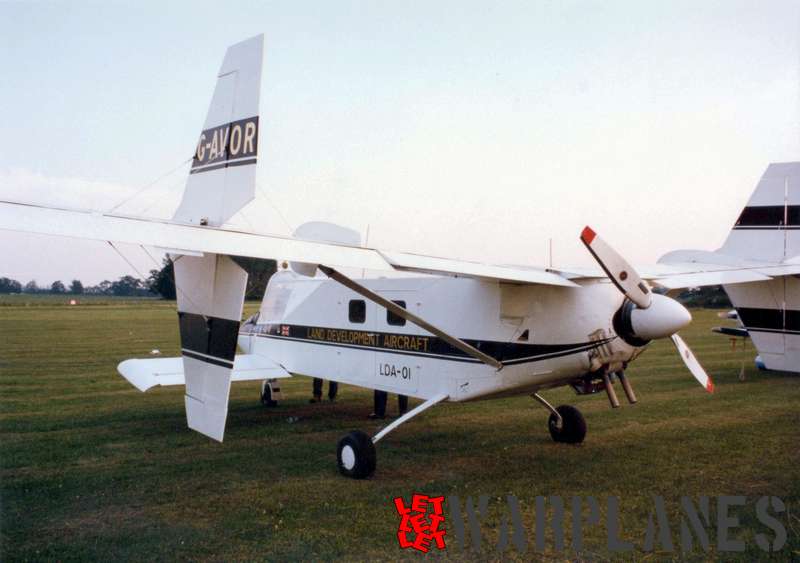
Flying for the first time on 24 August 1971 the Lockspeiser LDA-01 was a 7/10 scale research and development aircraft to prove a concept for a low-cost utility transport.
The LDA-01 was a single-seat canard monoplane of metal construction covered with fabric to reduce costs. It carried the civil registration G-AVOR (later changed into G-UTIL). It flew quite well and there were already plans for the production of the final larger model. Unfortunately a hangar fire destroyed the single prototype and the production version never materialized. The colour photo shows the LDA-01 during a flying week-end at Old Warden Aerodrome in June 1978.
Photo 32
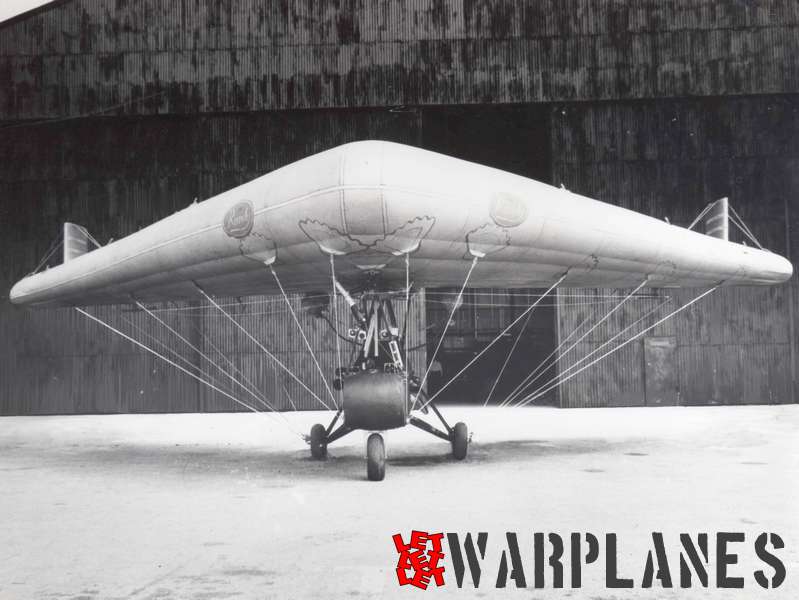
The ML Utility was an easy to produce and easy to fly small ultra-light slow-flying observation plane with a delta shaped inflatable wing. It was a design from Marcel Lobelle, a former chief designer for Fairey Aviation. Powered by a 65 hp Walter Micron engine the Utility Mk.I made its first flight in July 1955 with RAF registration XK776. Later two improved Mk.2 versions were built carrying the serials XK781 and XK784. They were tested at Boscombe Down and Farnborough but that was as far as the project came! The photo shows the first Utility XK781 in August 1956 with its wing fully inflated.
Photo 33
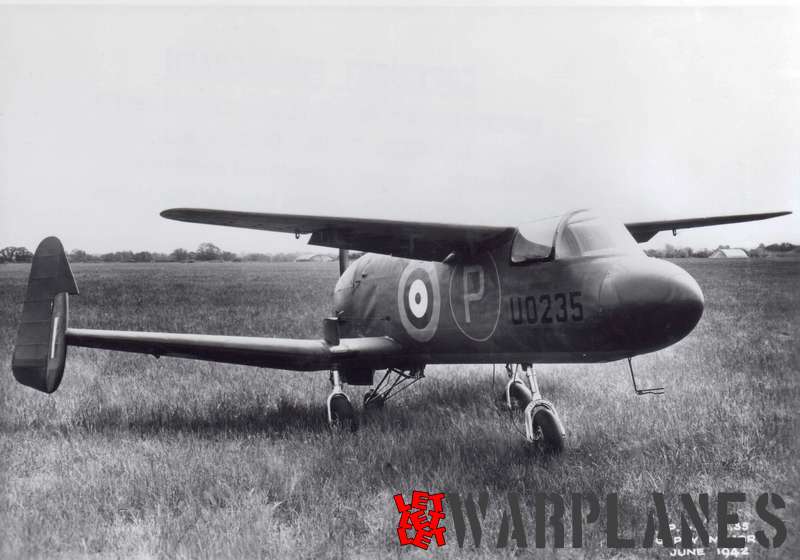
The Miles M.35 Libellula was a small proof-of-concept canard plane for a future Miles Rolls Royce Griffon powered canard fighter. Powered by a 130 hp De Havilland Gipsy Major driving a pusher propeller George Miles made in May 1942 the first flight. The M.35 carried the Class-B registration U0235. It was found to have quite dangerous flight characteristics and could hardly be controlled in flight. Although this was later improved by putting ballast weight in the nose the final fighter version was never built.
Photo 34
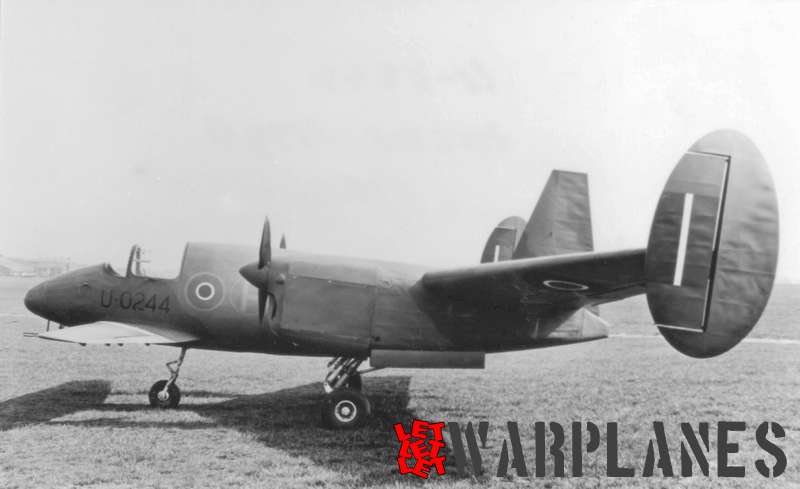
Based on the experiences with the earlier M.35, Miles built a larger twin-engine canard plane as a proof of concept for a bomber version as the M.39B. It was, just like the earlier M.35 fitted with the De Havilland Gipsy Major engine, but this time with the more powerful 1C version of 140 hp. The final larger operational version was planned with two Rolls Royce Merlin engines. The M.39B made its first flight on 22 July 1943 with Class-B registration U0244. Although it flew quite well and fully met its expectations, the final bomber version was never built.
Photo 35
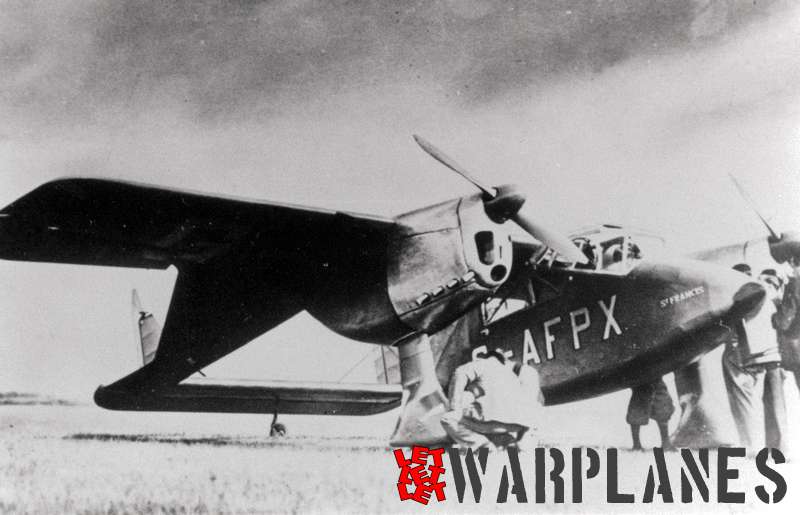
The Willoughby Delta was a two-seat, twin-engine, twin-tail boom design with a fixed undercarriage, powered by two 125 hp Menasco engines carrying the registration
G-AFPX. The name Delta reflects the tapered triangular fairing between the outer wing panels and the tail booms. The crew sat in a pod at the wing centre section.
The design was intended to be a sub-scale demonstrator for a larger type of aircraft as transport plane and as bomber. A model of a bomber version was actually made and shown. G-AFPX was constructed at Minster Lovell between Witney and Burford, and first flew in April 1939 at Witney, demonstrating remarkable good performance. Unfortunately, the prototype was destroyed in a fatal accident on July 10, 1939, and no further development took place.
Photo 36
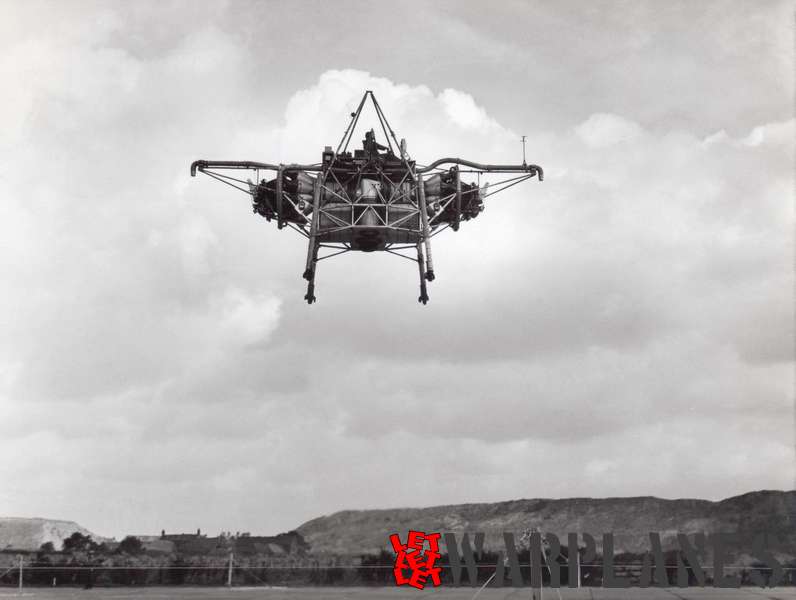
It does not even look like a plane, but still it could become airborne as we can see on this Rolls Royce photo release. This strange contraption is known as the Rolls Royce ‘Thrust Measuring Rig’ or TMR, but it is much better known as the ‘Flying Bedstead’!
It was developed and built by Rolls Royce in the fifties to investigate not only vertical take off and landing, but in particular how to stabilize flight and gain flight control at very low speeds and when hovering. It was powered by two Rolls Royce Nene jet engines of 1937 kg thrust each and as we can see on this picture the jet efflux was aimed downwards! Jet efflux was also used for the automatic stabilizing system.
Driving person behind the design of the TMR was Dr. A.A. Griffith who had worked on gas turbine design at the Royal Aircraft Establishment in the 1920’s and was a pioneer of jet lift technology. Griffith was employed by Rolls-Royce in 1939. Rolls Royce built two TMR’s that received the R.A.F. serials XK426 and XJ314. First take off took place on 3 July 1953 at Hucknall Aerodrome, Nottinghamshire, England, though it remained tethered to the ground. The first free flight by the TMR was made on 3 August 1954 with R.T. Shepherd, Rolls-Royce’s chief test pilot, at the controls. The information gained with the both TMR’s was essential for the development of the first jet powered British VTOL aircraft, the Short SC.1. The second Thrust Measuring Rig (Serial XK426) was destroyed in 1957 but the first (Serial XJ314) is preserved and on public display at the Science Museum in London, England.
Photo 37
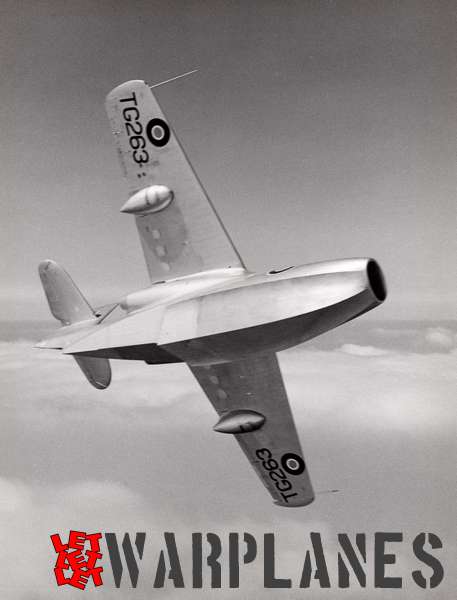
The Saunders-Roe SR.A/1 was quite unique in being the first (and only!!) jet powered fighter in flying boat form. Developed during the late war years the first prototype was flown for the first time on 16 June 1947 by Geoffry Tyson. It was intended to operate far away from the homeland in international crisis situations from easy to construct floating platforms and as such it was thought to be an alternative for the aircraft carrier. Saunders Roe built three of these small flying boats at the Cowes works at the Isle of Wight. They carried the R.A.F. serials TG263 and TG267 and TG271. Power plants were two new Metrovick Beryl jet engines of 1474 kg thrust each. TG267 crashed in April 1949 when it made an exercise flight for the Farnborough airshow. TG271 sunk when it collided on the water with a large piece of wood. Although the S.R.A/1 flew very well and showed to be highly manoeuvrable, no production orders followed and the whole idea of a flying boat jet fighter was given up. TG263 is now on display at the R.A.F. Museum at Duxford.
Photo 38
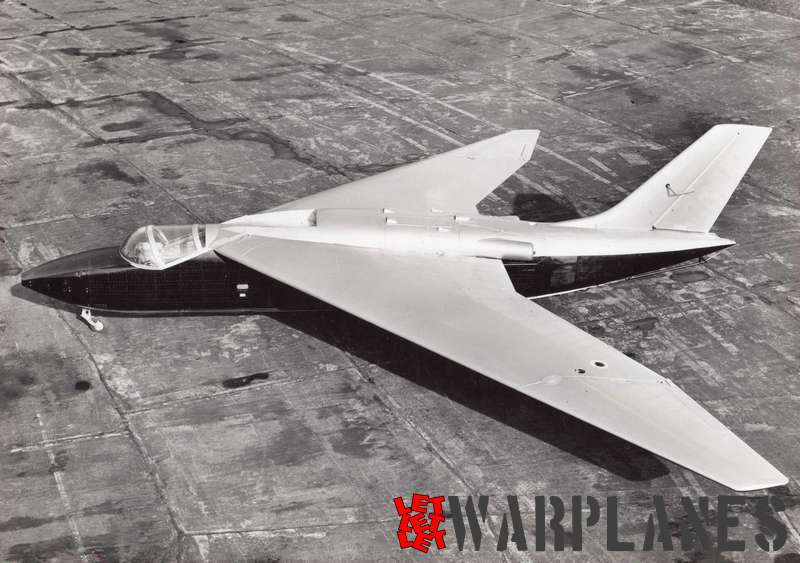
The Short SB.4 Sherpa was an experimental wing research aircraft designed and built during the 1950s to test the flight characteristics of the “aero-isoclinic” wing. It was powered by two small Turboméca Pallas turbojets of 160 kg each. The Sherpa’s first flight, piloted by Shorts’ Chief Test Pilot Tom Brooke-Smith, took place on 4 October 1953. It carried the Class-B registration G-14-1.The name Sherpa must have stood for ‘ Short & Harland Experimental Research Prototype Aircraft’
The Sherpa flew successfully, although its maximum speed was limited to 270 km/h (170 mph). Although the Sherpa was regarded as a success the principle of the aero-isoclinic wings was not followed on new operational aircraft.
The Sherpa was donated to the College of Aeronautics at Cranfield, where it was flown until 1964 with the Class-B registration G-36-1. It ended its days as an instructional airframe at Cranfield and unfortunately the wings were scrapped. The Sherpa fuselage still exists at the Lisburn site of the Ulster Aviation Society.
Photo 39
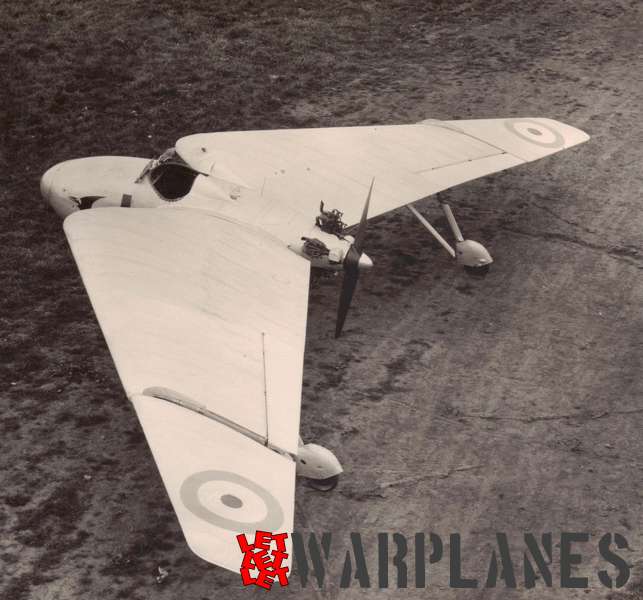
The Westland-Hill Pterodactyl series of experimental tailless or flying wing aircraft designs were developed starting in the 1920s. They are named after the Pterodactylus, a pre-historical flying reptile. They were designed by Geoffrey T. R. Hill and built by Westland Aircraft, having their first flights from RAF Andover. The first (Pterodactyl I, IA and IB) were high wing tailless monoplanes with fully moving wingtips for control built to overcome the issue of stalling and spinning. The pioneer tailless aircraft designer John William Dunne assisted Hill with the early designs. The pictures shows Pterodactyl IA, the first Westland-built example, a braced monoplane with Bristol Cherub engine. Later designs included fighter and transport aircraft, but none were actually built.
Nico Braas

